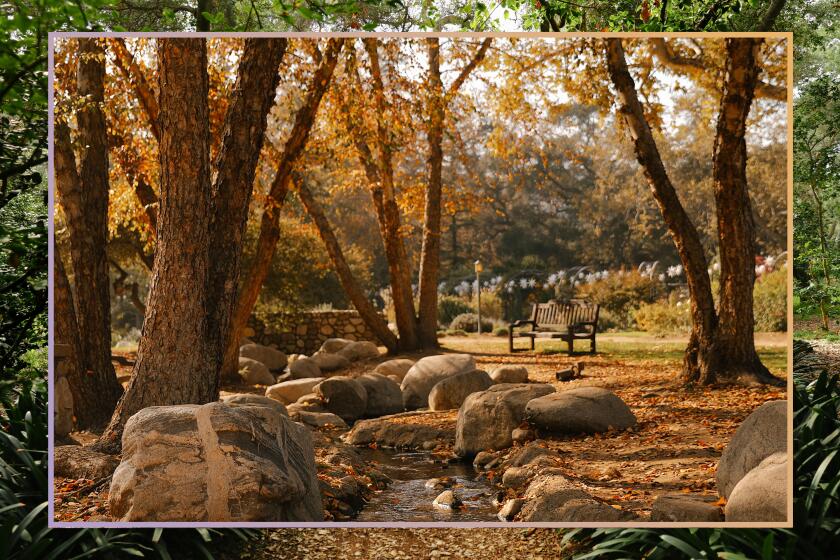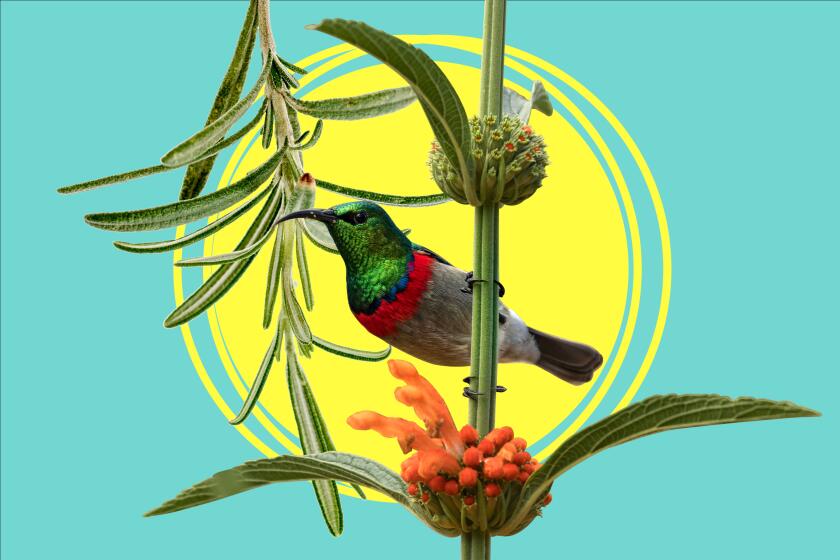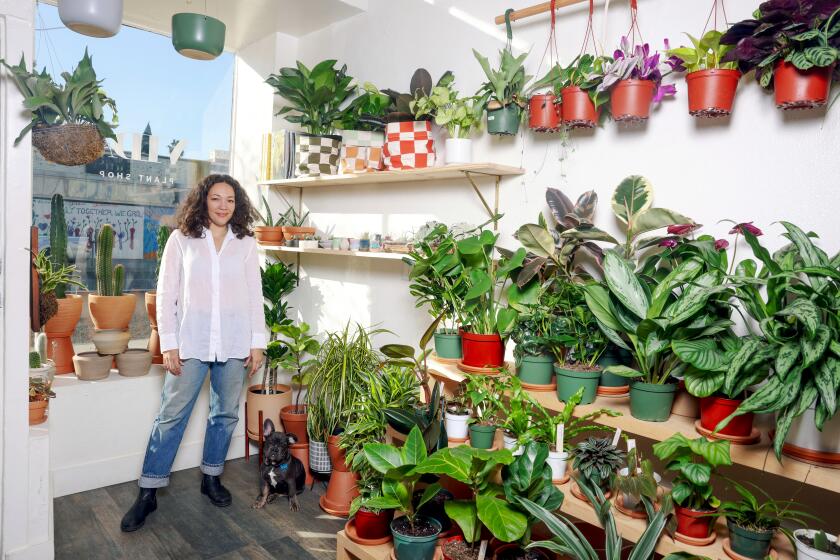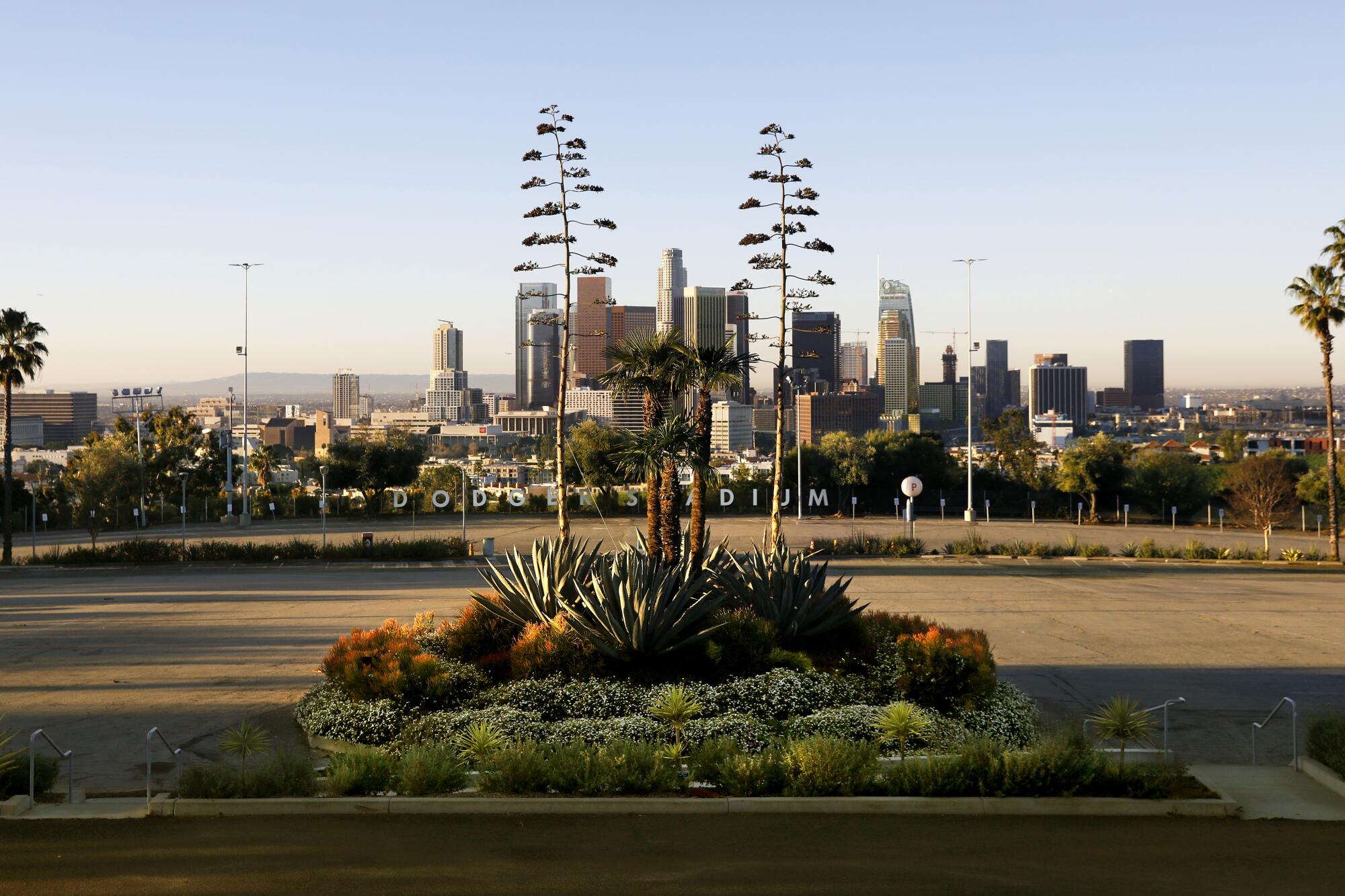
To understand how Dodger Stadium became the country’s first sports arena with an accredited botanic garden, you have to know that Chaz Perea, the stadium’s 36-year-old landscape manager, doesn’t do anything halfway.
He’s a beast about exercise, for instance, but he doesn’t just run or ride a bike; he trains for extreme sports like jumping into frigid water and swimming miles in the dark. When he had to quit a race one year because of hypothermia, he began taking icy showers to make him less susceptible to the cold.
And when it came to school, Perea didn’t just go to college: He earned three horticultural science degrees plus an arborist certification and an MBA in management while working two jobs — which he still does as the Dodger Stadium landscape manager and a horticulture professor.
So when Perea was inspired to transform the stadium’s water-hungry landscape of ivy and vines and tender annual flowers to a palette of drought-tolerant plants heavy on California native varieties, he didn’t just decide to plant a few poppies and salvias.
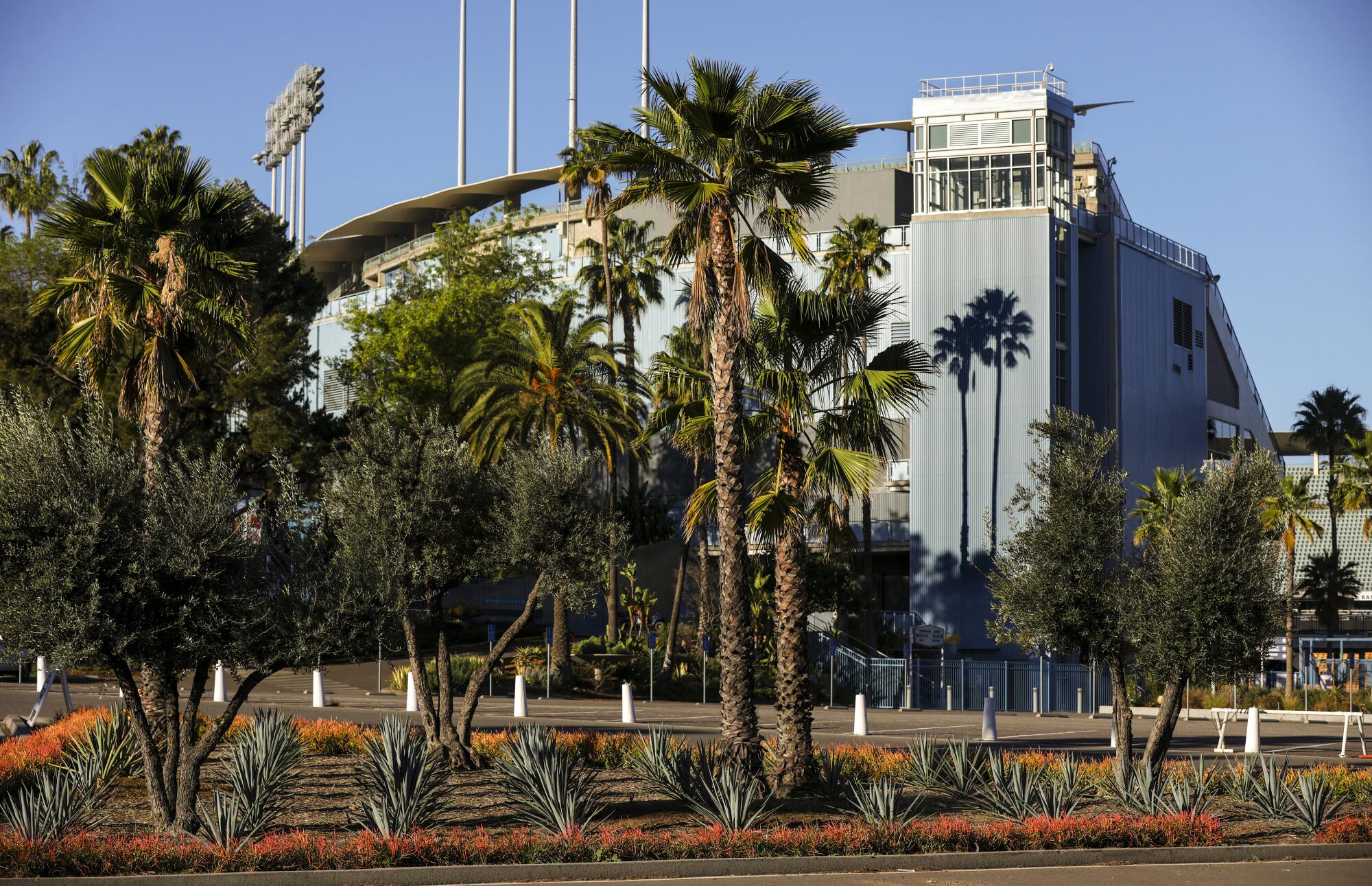
“He just called me out of the blue asking for help,” said Abby Meyer, executive director of the U.S. office of Botanic Gardens Conservation International, which is based at the Huntington Library, Art Museum, and Botanical Gardens in San Marino.
“When I told him about accreditation, he almost peed his pants,” she said. “He was like, ‘OK! We’re doing this!’ His excitement was contagious and very inspiring.”
Today, the slopes and giant concrete martini-shaped planters around the stadium have been transformed into beds of fragrant salvias, agaves of multiple colors and size, and boulder-sized century plants sending their towering blooms into the sky. The boxes outside the Dodgers Team Store at the Top Deck are overflowing with succulents of every color. And true to a botanic garden, all the plants have their tags listing their common and botanical names.
But before he could succeed, Perea had to bring in a panel of advisors, spend five years satisfying the accreditation requirements — which were finalized in December — and convince stadium management and his skeptical crew that this idea made sense.
Not only did he want Dodger Stadium to develop a botanic garden, he believed his small landscape crew could rival the gardeners at the Palace of Versailles outside Paris — an epiphany he had during his first trip to Europe in 2017.
While these gardens are beautiful and inviting spaces, don’t mistake them for parks. They are more like living museums.
He’d just turned 31. He’d been working at Dodger Stadium for seven years while finishing his advanced degrees — “I went seven years without having a beer” — and had hundreds of hours of unused vacation, so when a friend invited him to join his trip to France, Perea decided to go.
And that’s how he got his mind blown at Versailles.
“The place was drop-dead gorgeous,” he said. “But then I looked around and saw these guys who were working there and I started thinking ... ‘This is all just plants and concrete. ... Why can’t Dodger Stadium do this too?’”
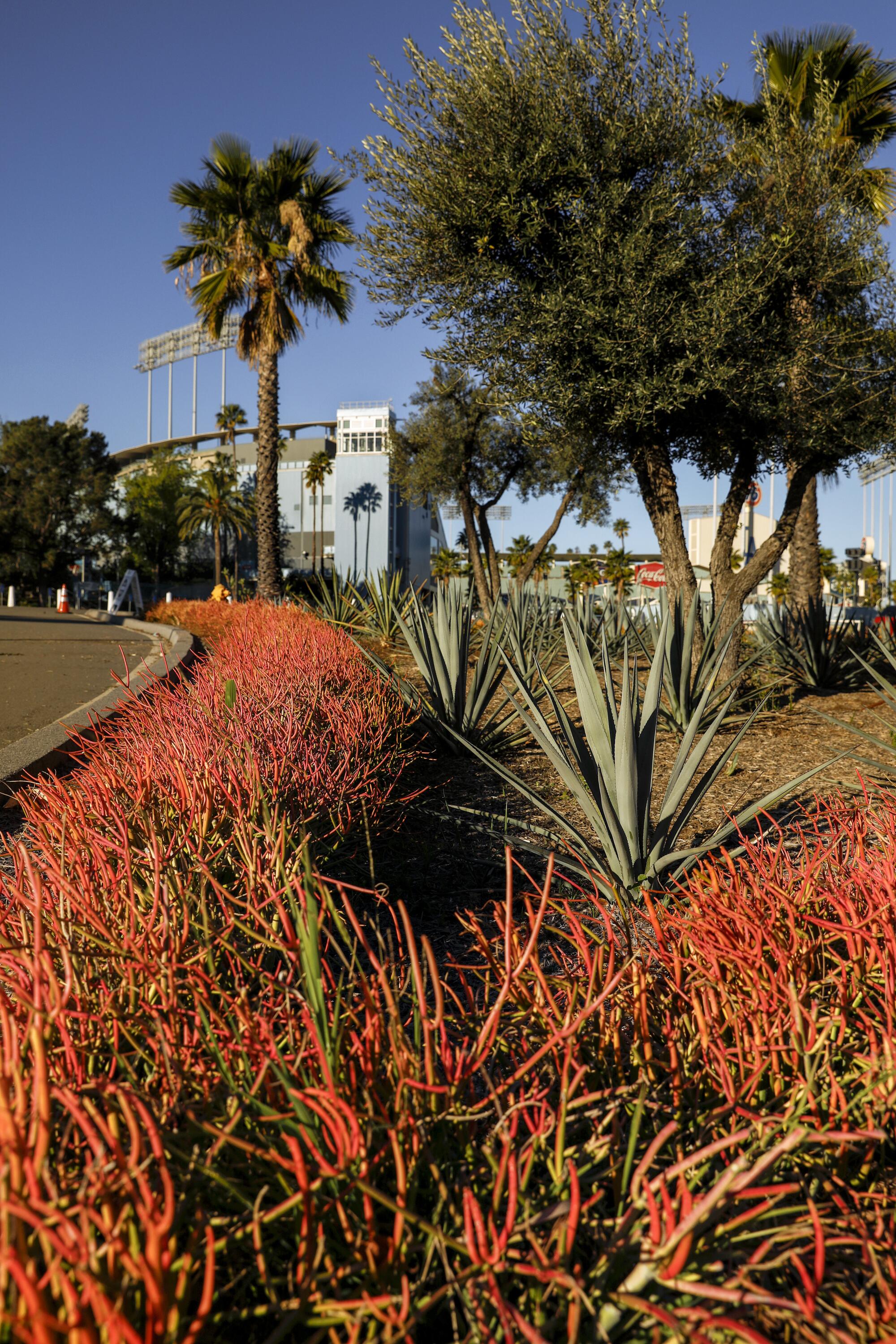
He went back to Europe three more times over the next four years, visiting Spain, Italy and Greece, and each trip just deepened his admiration for the way Europeans have integrated art and plants throughout their cities.
“These people have been here 2,000 years figuring things out and they have an appreciation for beauty we don’t have,” he said.
“We do a terrible job with that in Los Angeles. I started thinking about why it’s so much better over there, and here’s a key factor: Investments in beauty pay off in the long term because people make pilgrimages to see them. I thought, ‘We can do that at Dodger Stadium. If we do it in-house, and it’s built by my team, it will be beautiful and people will come.’”
But the project was daunting. “Botanic gardens are living museums where we maintain plant genetic resources and heritage,” said Meyer. “To qualify [as a botanic garden], you need to have a permanent living collection and a commitment to growing those plants and maintaining a level of plant diversity long-term.”
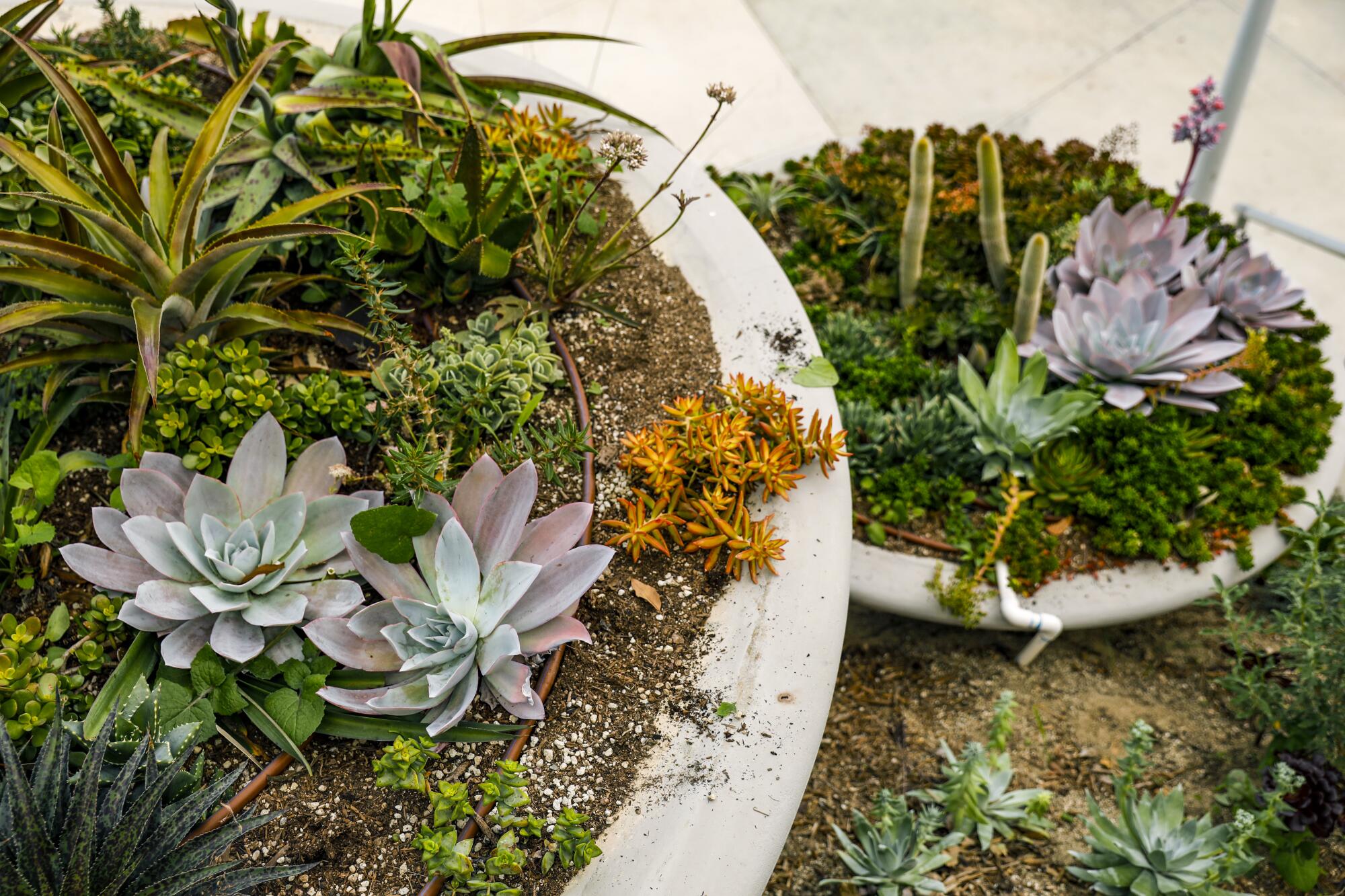
From Versailles to drought-tolerant ‘Dodger Blue Agave’
Perea’s vision was to create a water-wise landscape that will introduce thousands of stadium visitors to the beauty of California native and other drought-resistant plants and water-saving irrigation techniques. “In general, if you’re a plant and you can take the heat and adapt well to our soil, we want you.”
But there were so many challenges. When his team went to replant the stadium’s 149 signature “martini” containers — so named because they look like giant martini glasses — they discovered that the edges of the 1950s-era concrete containers were breaking away. They wanted to save the vintage planters and Perea was on a tight budget, so they used the smarts of Jose Portillo, a member of the landscaping crew who had previously worked in construction. He figured out how to use rebar to strengthen the edges, which they then reshaped by hand with fresh concrete, Perea said.
Tour the botanic garden
It was a lot of work — they’ve repaired 70 so far — but it preserved a bit of stadium history and the containers look great with succulents and salvias cascading down the sides.
Another big job was removing the weedy grass in a triangular island in the parking lot and filling it with 22 varieties of agave arranged by size in precise rows, from the dainty, white-edged ball of spikes known as Queen Victoria agave (Agave victoria-reginae) to the saw-toothed variegated century plant (Agave americana ‘Variegata’) with its mammoth striped gray and yellow leaves.
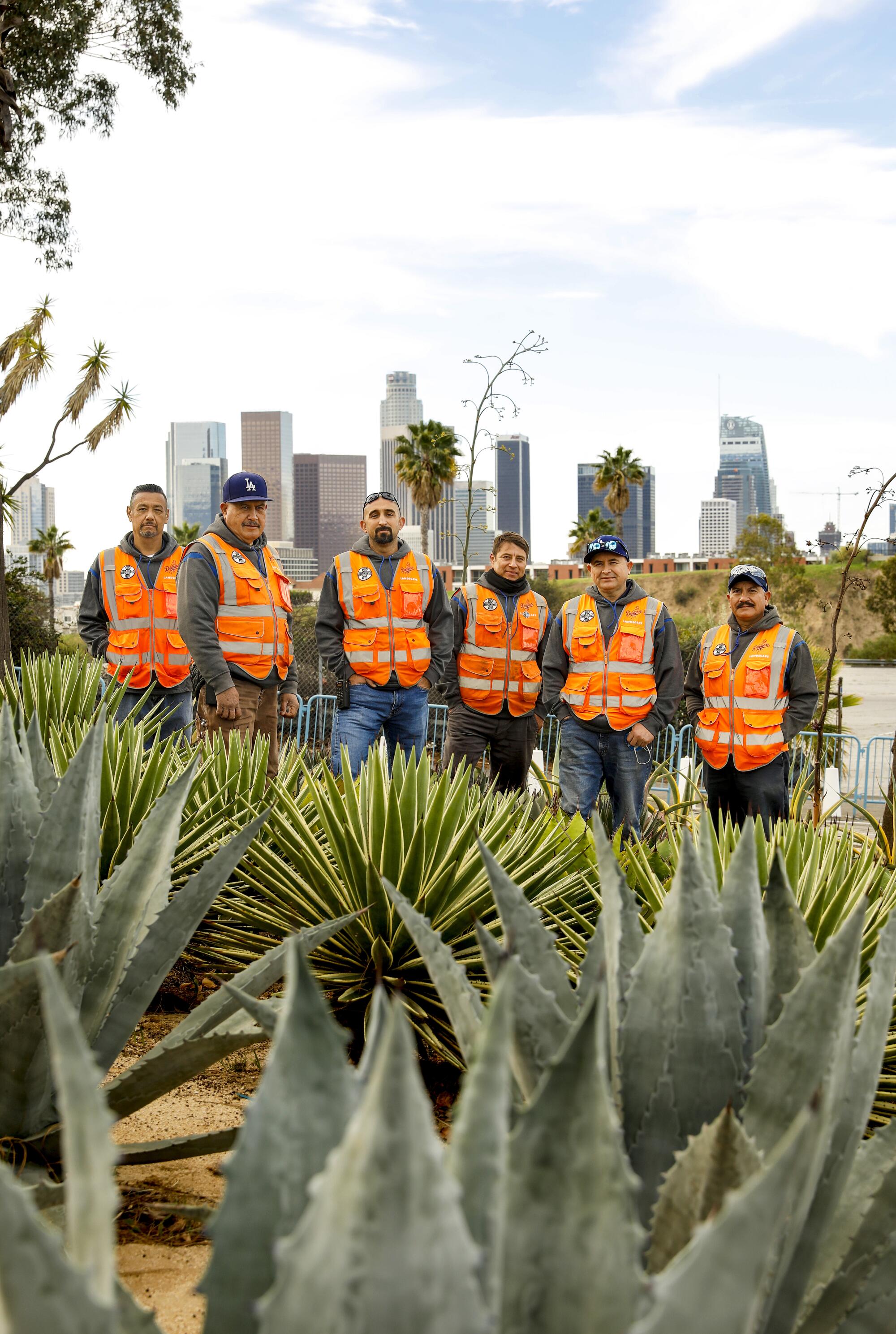
Every species is labeled, and Perea hopes it will inspire fans looking to put more drought-tolerant plants in their yards. “We’re bound to have one variety you’ll love,” he said.
There’s something exciting about putting all those agaves so close together. Maybe, Perea said, only half-joking, the wind will cross-pollinate these different varieties, and create a new agave hybrid that his crew could propagate and sell someday in the stadium gift store. Dodger Blue Agave, anyone?
Drought-resistant plants like hummingbird sage and rosemary are the ideal addition to Southern California gardens.
The landscape crew of Pete Serna, Freddy Cortez, Jose Perez, Jose Sandoval, Octavio Suarez and Portilllo (who just retired) also transformed an asphalt parking triangle into Tequila Island or Isla de Tequila — geometric plantings of the Weber’s Tequila Agave (Agave tequilana) native to Mexico and famous for its tequila production. The agaves’ graceful blue-green leaves are lovely, but Perea also wanted to create a tribute to the Dodgers’ huge Mexican fan base.
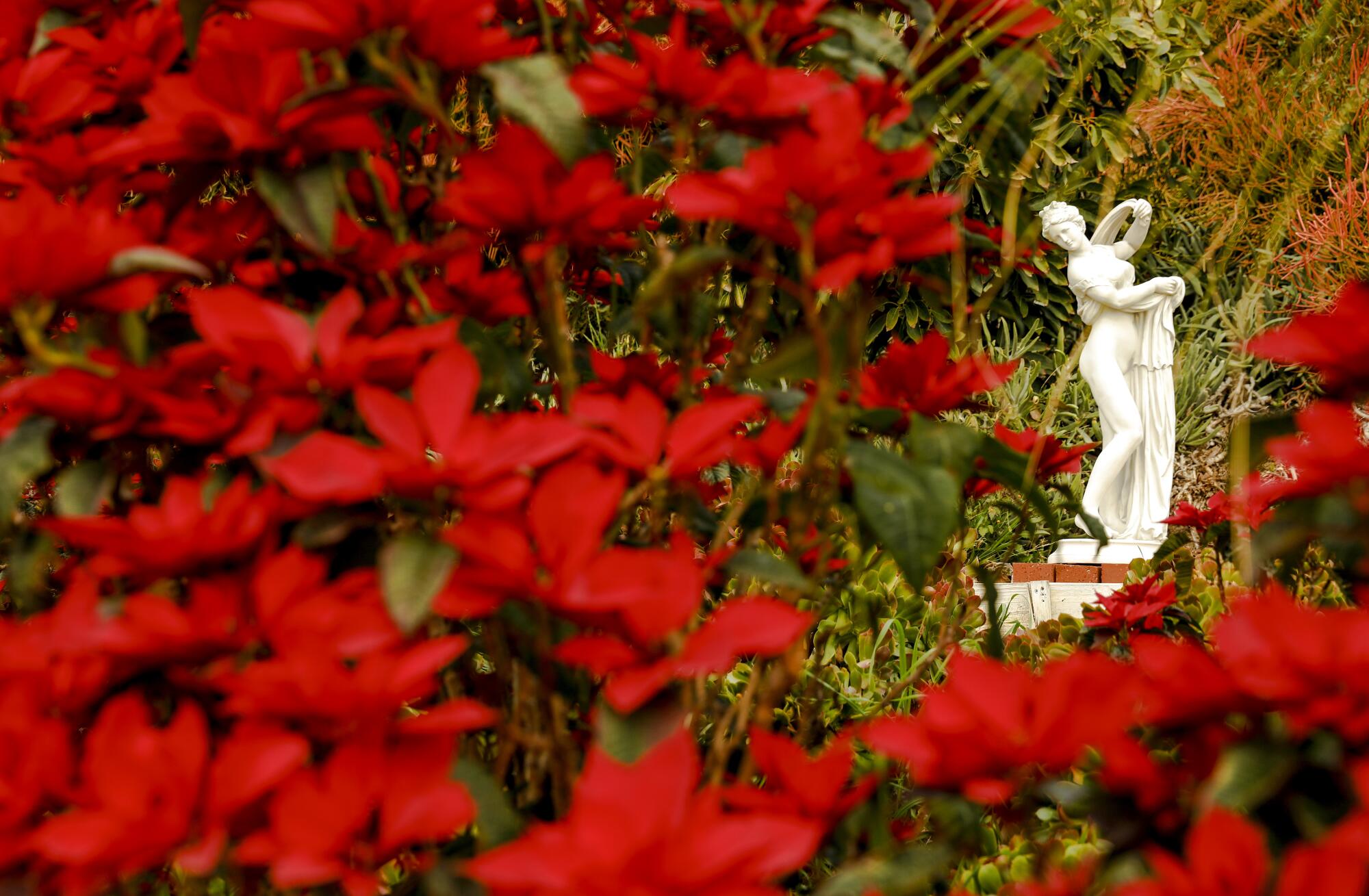
“In Mexican-Latino households, the Dodgers are religion,” he said, and he likes to think of Isla de Tequila “as playing to Mexican heartstrings.”
So is he thinking Dodger Tequila in the future? Perea laughs at this, but only a little. You can see that somewhere in the back of his mind he’s weighing the possibilities because he doesn’t dream halfway either.
Which is good because sometimes he has to hold the dream until his partners catch up, which isn’t always quickly. Perea said selling the idea of a botanic garden to his landscaping team was both challenging and vital.
“I told my guys, ‘We can do this thing, make a botanic garden,’ and they said, ‘What the hell are you talking about?’”
“I told my guys, ‘We can do this thing, make a botanic garden,’ and they said, ‘What the hell are you talking about?’ because none of them knew about botanic gardens.”
So on a regular work day in the spring of 2019, Perea borrowed a company van and took his team on a field trip to see the cherry blossoms and tulips in full bloom at Descanso Gardens, the first time any of them had visited a botanic garden.
“They loved it,” he said, so he arranged more trips, to the South Coast Botanic Garden and California Botanic Garden — the state’s largest garden of California native plants — and the gardens at the Getty Center and the Huntington, even the Museum of Latin American Art, artist Judy Baca’s mural “The Great Wall of Los Angeles” and Tanaka Farms, “which was key, because it’s one of the most successful agritourism models I’m aware of.”
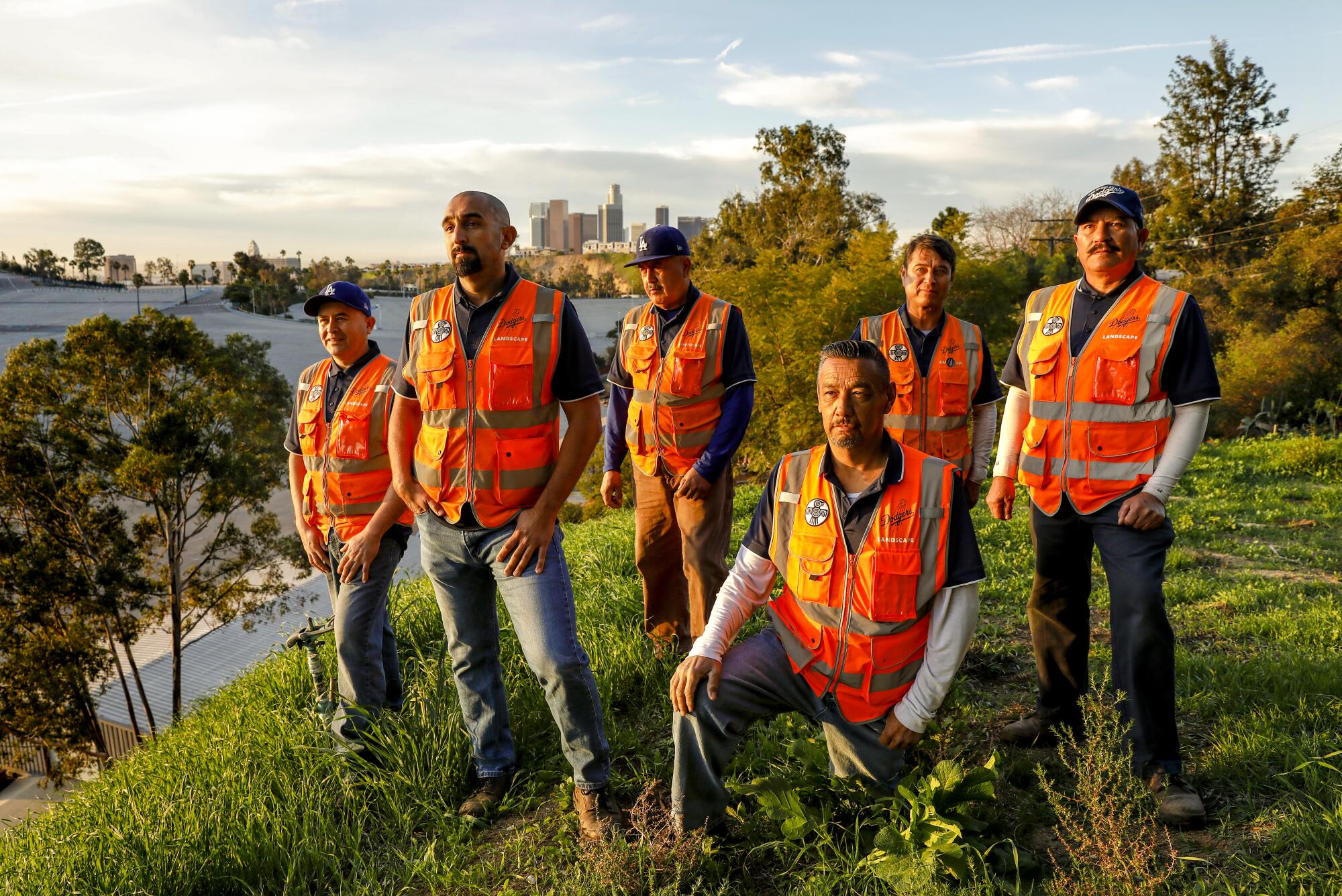
Perea even enrolled his team in the California Native Plant Landscaper Certificate Program at the Theodore Payne Foundation, as part of the stadium’s partnership with the foundation to collect native seeds from the slopes along the edges of the stadium’s 300 acres.
“And finally they got it,” Perea said. “They were like, ‘These gardens are fantastic! Each one has its own identity,’ and I told them, ‘We can do that too.’”
Since then, after two pandemic-related layoffs and a retirement, his crew has dropped to just himself and five landscapers, trying to add more plantings and keep the existing ones in check. It’s been a slow but steady pursuit. There are still a few slopes of ivy on the east side of the stadium and some of their initial plantings didn’t like the soil or location and have withered away, waiting to be replanted.
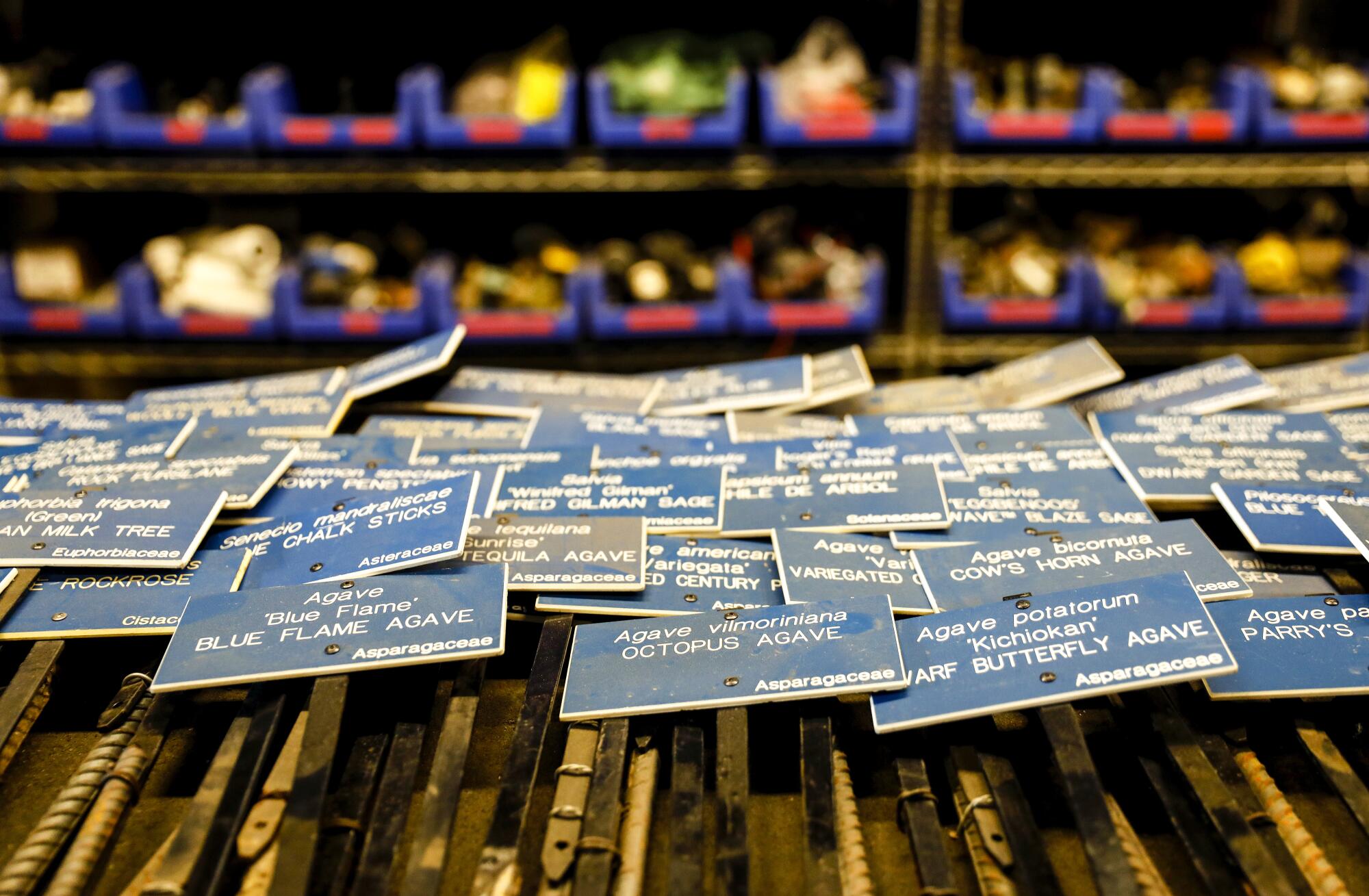
But experimentation is part of the process. “We just see what works,” Perea said. Most of the new plantings are getting taller and starting to bloom and all the signs are in place, identifying the more than 120 varieties of California native and drought-tolerant plants.
Perea offered a few test tours last winter, just before the accreditation was finalized in December, and he plans to resume tours of the botanic garden every Friday at 10 a.m., starting March 11. Expect some walking on stairs and ramps, and a lesson in water-wise irrigation techniques at Perea’s demonstration garden.
Public access and education are part of the requirement for botanic gardens, but for Perea it’s also about building awareness of water-wise landscaping and irrigation, especially for the Latino community, which isn’t always targeted for these kinds of programs. He also hopes that getting Dodger fans excited about the plants around the stadium will spark more visits to the region’s other botanic gardens.
Reimagining the job of a Dodger Stadium landscaper
Creating the botanic garden isn’t just about landscaping, Perea said. It’s also about respect — for the history of the land, the people who once lived there and the people who work and play there now.
Perea has strong feelings about building staff unity and pride. When he was hired as the stadium’s landscaping manager he was just 24, a new college graduate, and some of his team had been stadium employees longer than he’d been alive. Things were dicey at first, but Perea worked on the respect. The metal landscaping shop had become a place where other departments put their garbage. Perea cleaned out the building to house equipment, yes, but also create a special place just for the landscaping team’s meetings and breaks — no more garbage in their workspace, he said.
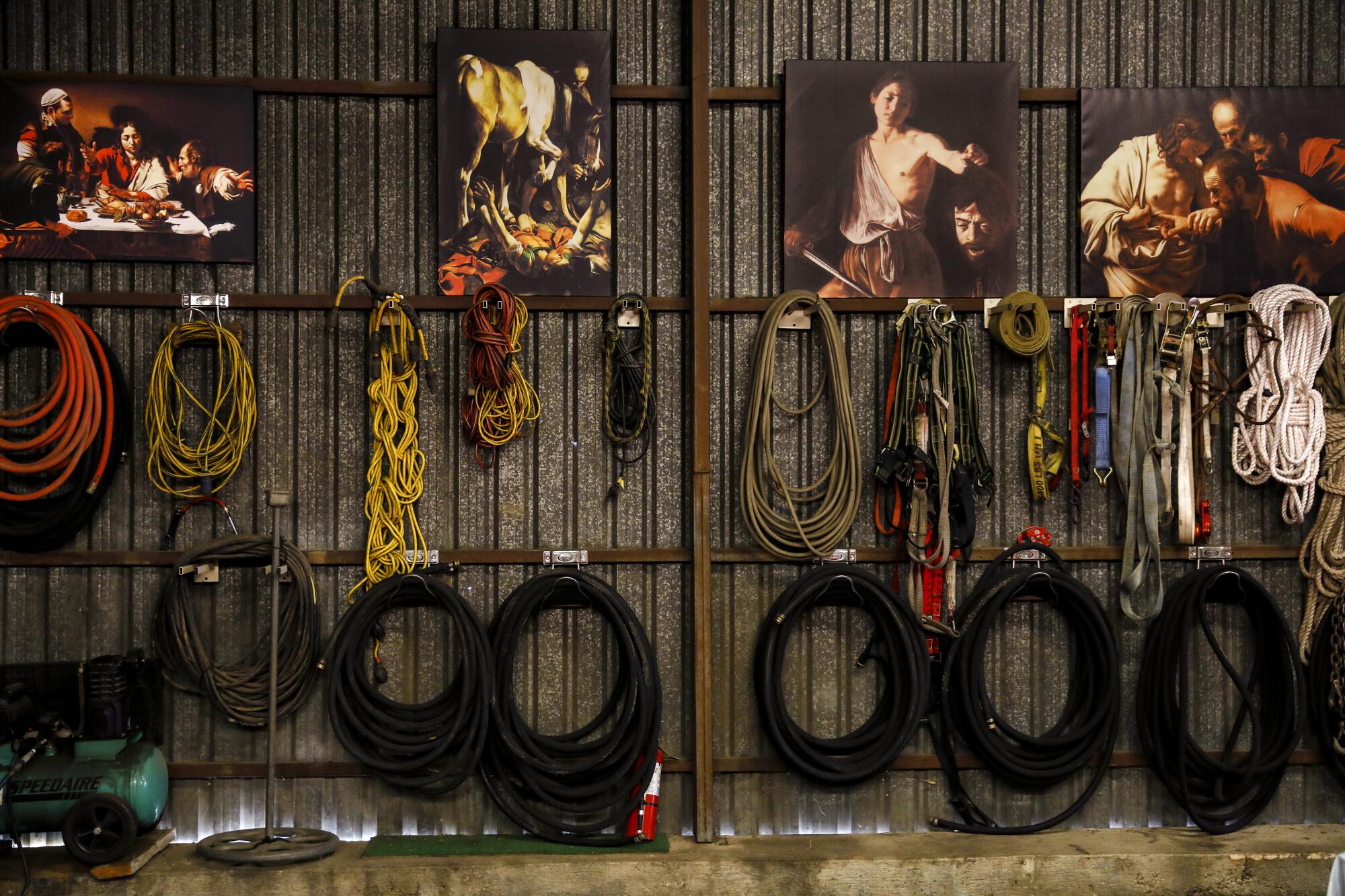
He hung replica paintings of his favorite artists, such as Renaissance painter Caravaggio, above neatly coiled hoses and shovels and commissioned an oil portrait of the entire landscaping crew that hangs front and center over their spotless lockers.
After working 60 hours a week, Sasha Pace was burned out. Then she opened a plant shop in Long Beach.
On the overgrown hill behind the shop, where seedlings were stored waiting to be planted, Perea had the crew create an outdoor refuge too. They pulled the weeds and planted thickets of citrus trees, sages, coral-colored fire sticks and poinsettias discarded from the main office, which grew 6 feet tall and bloom deep red during the winter. They salvaged discarded benches from the stadium and created a tranquil seating area under a grove of eucalyptus with sculptures Perea purchased himself — a replica of a gargoyle from Paris’ Notre Dame cathedral, a burro, a playful nymph, Our Lady of Guadalupe and the crew’s mascot, la águila or the Aztec eagle, “a symbol of courage and strength.”
Perea designed special Aztec eagle patches that are sewn on to all the orange safety vests worn by him and his staff. “People try to buy those vests off their backs,” he said, “but they’re only for my crew.”
Their lush hillside retreat also is reserved just for landscaping business and meetings. It wasn’t always comfortable for his crew to go to the stadium’s main office for lunches or meetings, because “if it’s a common space, people who are suited up don’t always like to sit next to someone in an orange vest,” he said. “But this is theirs; it’s something they can be proud of.”
And it was a way to build unity, just like the outrageous idea of building a botanic garden at a sports stadium, Perea said.
“We needed a dream to chase together.”
More to Read
Sign up for The Wild
We’ll help you find the best places to hike, bike and run, as well as the perfect silent spots for meditation and yoga.
You may occasionally receive promotional content from the Los Angeles Times.
